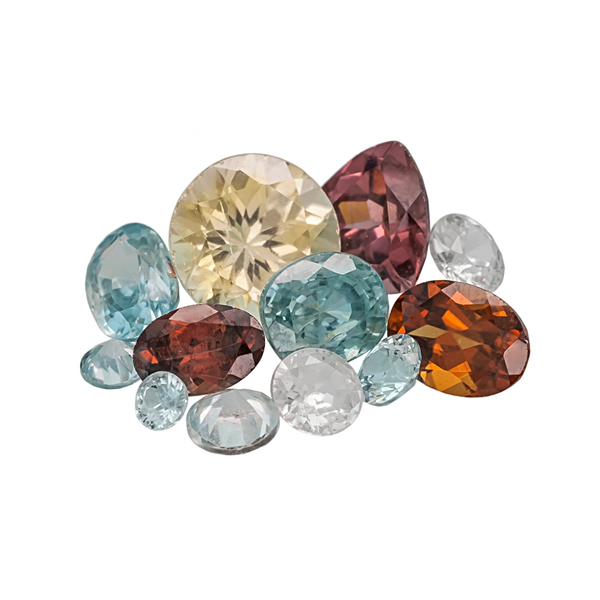Zircon is the oldest known mineral on earth and one of the most abundant minerals in the earths crust.
Zircons, which are of gem quality due to their size and purity, are sometimes used as a diamond substitute (not to be confused with zirconia ZrO2 which is an artificial substitute).
However, it has several drawbacks, including that it does not withstand cleaning in ultrasonic baths and can change color if subjected to heat
- Color: Zircon comes in a variety of colors, including colorless, blue, yellow, brown, orange and red. Blue and colorless zircons are especially popular in jewelry.
- Clarity: Zircon can be transparent to translucent and high-quality samples exhibit good clarity and brilliance.
- Durability: Zircon is a relatively hard gemstone, with a hardness of 6.50 to 7.50 on the Mohs scale. This makes it suitable for everyday wear in jewelry but requires some care to avoid scratches.
- Origin: ZThe main deposits of zircon are found in Cambodia, Myanmar, Sri Lanka, Thailand, Australia and Tanzania.
- Dispersion: Zircon is known for its strong dispersion, which refers to its ability to split light into spectral colors. This dispersion gives zircon a fiery, vibrant appearance, especially in well-cut stones.
- Uses: Zircon is commonly used in jewelry. Colorless zircon can resemble diamonds and are often used as diamond substitutes. Blue zircon known as “starlite” is valued for its rarity and asterism (star-like optical effect).
**Check prices according to color and size.








